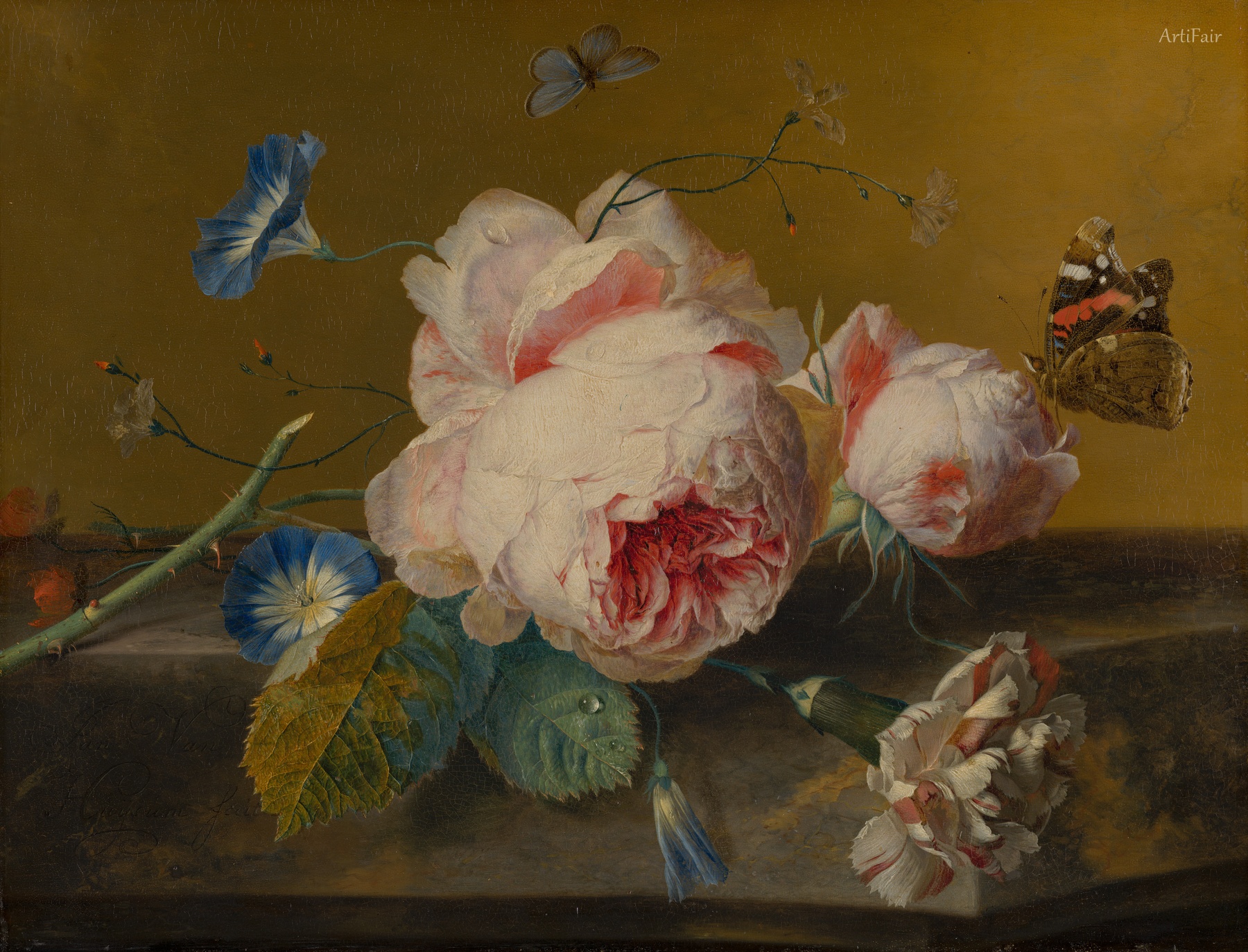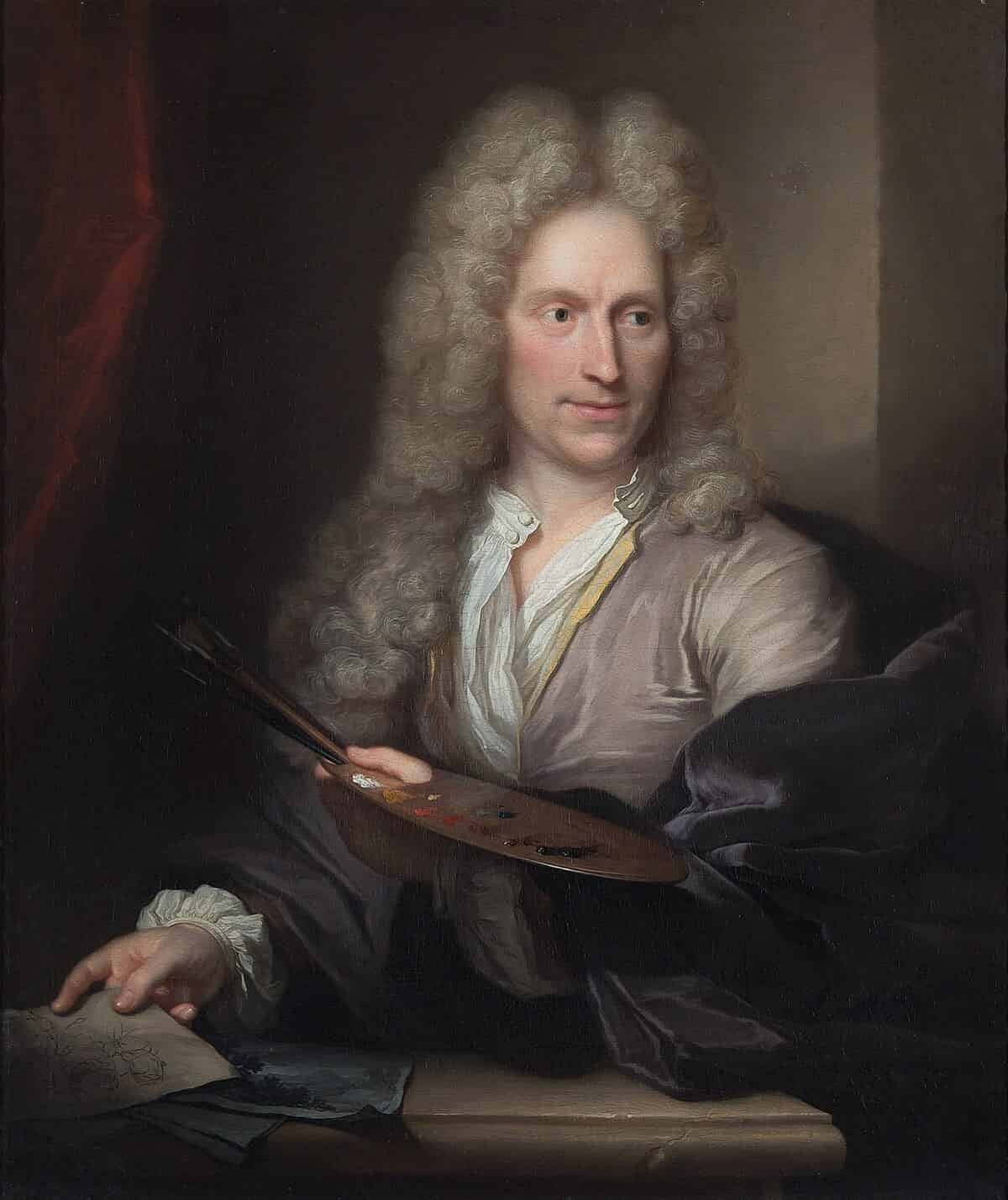

Jan van Huysum
NL
85
Artworks
1682 - 1749
Lifespan
Artist Biography
Jan van Huysum (or Jan van Huijsum), born in Amsterdam on April 15, 1682, and died there on February 8, 1749, stands as one of the most distinguished painters of the Dutch Golden Age, particularly celebrated for his exquisite flower still lifes. He was the eldest son of Justus van Huysum the Elder, a versatile artist known for flower paintings and decorative work, and Margrietje Schouten. Jan grew up in an artistic milieu; his brothers Jacob, Justus the Younger, and his half-brother Michiel also became painters, carrying on the family tradition. His grandfather, Jan van Huysum the Elder, was noted for decorating doorways and vases. This early immersion in a thriving family art business provided Jan with foundational training in decorative arts from a young age.
Van Huysum received his initial artistic instruction from his father, but his innate talent quickly allowed him to surpass his mentor. He spent most of his life in Amsterdam, where he married Elisabeth Takens in 1704. Together, they had twelve children, though only three survived their parents. One of his daughters, Francina Margaretha van Huysum, also became a flower painter, possibly assisting her father. Van Huysum rapidly established a formidable reputation, becoming, by common consent, the leading still-life painter of his era, often hailed as the "phoenix of all flower painters." His dedication to his craft was absolute, and he was known for his secretive nature regarding his techniques, reportedly forbidding even his own brothers from entering his studio to protect his methods of purifying and applying colors.
Van Huysum's flower paintings are masterpieces of detail, elegance, and technical brilliance. He was renowned for his ability to render the most minute details with astonishing precision, depicting dewdrops, insects, and the delicate textures of petals with such realism that they appeared tangible. His compositions, particularly in his mature period, are characterized by an unerring elegance and balance, avoiding the over-composition that plagued some of his contemporaries. A significant development in his style occurred after 1720, when he began using lighter, often yellowish, backgrounds instead of the darker grounds of his earlier works; these later pieces are generally considered his finest. He often preferred painting on smooth oak or copper panels, which enhanced the luminosity and detail of his work. His technique included painting leaves initially in blue and then applying a brown or green overwash, a method pioneered by Otto Marseus van Schrieck. He painstakingly painted from live flowers, assembling his elaborate bouquets over extended periods, sometimes waiting a year or more for specific blooms to be in season, underscoring his perfectionism.
His extraordinary skill brought him immense fame and financial success during his lifetime. His paintings were highly sought after by royalty and affluent collectors across Europe, including Prince William of Hesse, Sir Robert Walpole (the British Prime Minister), the duc d’Orléans, and the kings of Poland and Prussia. His works commanded exceptional prices, sometimes fetching four to five times more than paintings by Rembrandt. This acclaim ensured he died a very wealthy man. Despite his success, he had few pupils; Margareta Haverman was a notable student, but her burgeoning talent reportedly sparked such jealousy in van Huysum that she was compelled to leave his studio. His contemporary rival in flower painting was Rachel Ruysch, though van Huysum's bright and sunny treatment led to comparisons with Correggio, just as Jan David de Heem, an earlier master, was likened to Titian for his warm, golden tones.
While predominantly known for his still lifes, Jan van Huysum also ventured into landscape painting, though these works have not received the same level of critical acclaim. Approximately half of his paintings in public collections are landscapes, often depicting imaginary Italianate scenes with classical ruins, tranquil lakes, and motionless trees, rendered with a glossy smoothness that some critics found lifeless or rather unfortunate, especially his larger pieces. His smaller landscapes, however, were praised for their delicate touch and pleasing detail. The earliest dated landscape is from 1717, housed in the Louvre. Van Huysum also produced a significant number of drawings, both compositional studies for his paintings and detailed depictions of individual flowers, reflecting his keen observation of nature. He often traveled to horticultural centers like Haarlem to study rare blooms directly from life.
Jan van Huysum's legacy is profound. His innovative approach to composition, color, and detail profoundly influenced the trajectory of flower painting for sixty to eighty years following his death. His style became a benchmark, inspiring numerous followers and imitators, including his own family members, Jan van Os and his son Georgius Jacobus Johannes van Os, Gerard and Cornelius van Spaendonck, and Wybrand Hendriks. Today, his masterpieces are treasured in prestigious museums worldwide, including the Louvre in Paris, the Rijksmuseum in Amsterdam, the National Gallery in London, The Hermitage in St. Petersburg, and the Getty Museum, attesting to his enduring status as one of the greatest still-life painters in art history.